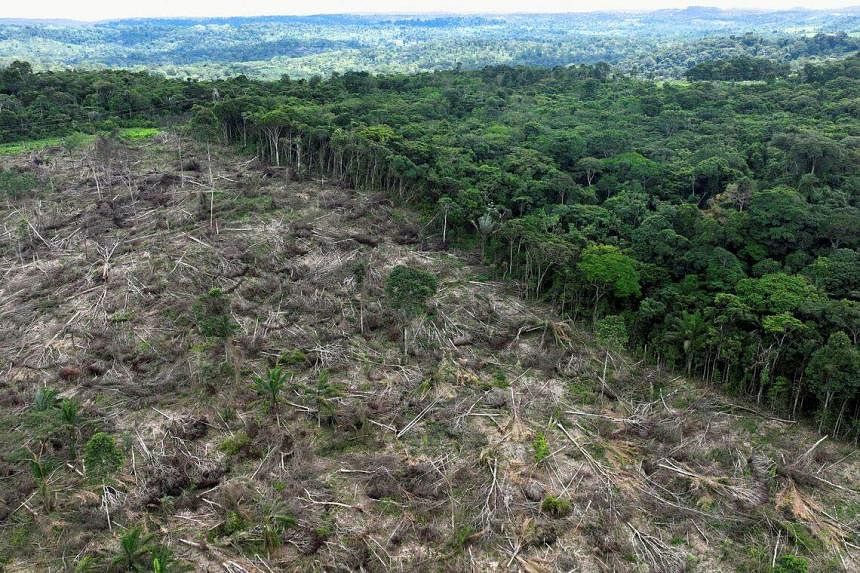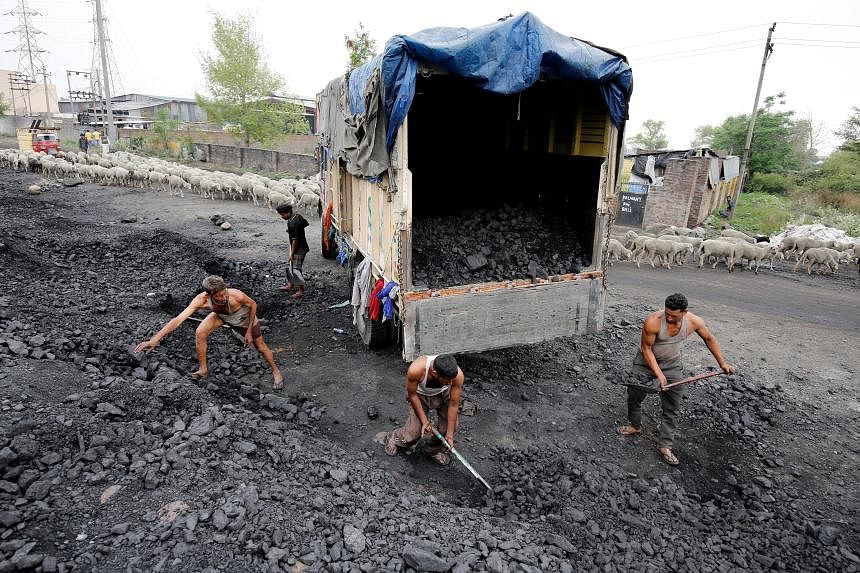DUBAI - Global carbon emissions are forecast to reach a record in 2023, driven higher by strong emissions growth in China and India, according to a major global study released on Dec 5.
The annual Global Carbon Budget analysis, released during the COP28 United Nations climate talks in Dubai, predicts that emissions from burning fossil fuels will increase by 1.1 per cent above 2022’s levels to reach 36.8 gigatonnes of carbon dioxide (GtCO2) in 2023.
A gigatonne is a billion tonnes.
Consumption of coal, oil and gas is expected to rise in 2023 from the previous year, according to the analysis by the Global Carbon Project consortium, which conducted the peer-reviewed study.
The trend is worrying because 2023 is set to be the hottest year on record.
Emissions would have to fall sharply this decade if the world is to have an even chance of limiting warming to 1.5 deg C above pre-industrial levels, said the UN climate science panel.
Another year of record CO2 emissions means the world could hit the 1.5 deg C guardrail by 2030, according to this latest global study.
The Global Carbon Budget report is produced by an international team of more than 100 scientists. It analyses huge amounts of energy data and estimates what happens to all the CO2 when it is in the atmosphere.
For instance, the analysis looks at the Earth’s natural carbon sinks, such as forests and oceans, which absorb large amounts of CO2.
China produces roughly a third of all global CO2 emissions from fossil fuel use. And in 2023, China’s fossil fuel CO2 emissions are projected to increase by 4 per cent, driven mainly by strong growth in oil and gas consumption.
Growth in 2023 is partly caused by a delayed rebound from China’s Covid-19 lockdowns.
India’s CO2 emissions are forecast to jump by 8.2 per cent in 2023, propelled by sharp increases in emissions from coal, oil and gas consumption, and cement production. The country’s emissions from coal are projected to rise by 9.5 per cent, largely on growing demand for electricity, with new renewable energy capacity unable to meet the sharp increase in demand for power, said the analysis.
India is responsible for 8 per cent of mankind’s CO2 emissions from fossil fuel use.
Emissions from international aviation and shipping (2.8 per cent of global emissions) are projected to increase by 11.9 per cent in 2023.

Bucking the trend, emissions fell in 26 nations, including the United States.
“Among the bad news of every single fossil source having increased emissions this year, there are plenty of successful stories showing that decarbonisation is possible without damaging the economy, and that it can happen quickly,” said Dr Pep Canadell, executive director of the Global Carbon Project.
Among the most remarkable was the continued fall in emissions in the US, with coal emissions declining by as much as 18 per cent in 2023.
“In fact, coal use in the US is now at the same level as it was in 1903, which is just remarkable,” Dr Canadell told The Straits Times.
In Europe, decarbonisation of the power sector and industry has accelerated, spurred on by the energy supply disruptions caused by the war in Ukraine. This is despite a temporary increase in the use of coal, he said.
CO2 emissions are also caused by land use change, including deforestation and land degradation. In 2023, emissions from this sector are estimated at 4.1 GtCO2, bringing total annual CO2 emissions from all sources to 40.9 GtCO2 in 2023, also a record.
The good news is that efforts to plant more trees are paying off: They are soaking up a significant amount of CO2 from the atmosphere – 1.9 GtCO2, or roughly 5 per cent of all fossil fuel CO2 emissions.
But this is still far from offsetting the annual emissions of 4.2 GtCO2 from permanent deforestation, Dr Canadell said.
More reforestation and revegetation of degraded lands could boost the land sink, he said.
“Having said that, we are still cutting trees down as if there is no tomorrow. Less than 20 years ago, but still at a ridiculously high level,” he added.
The study showed that the land and oceans continue to absorb about half of humanity’s CO2 emissions – trees, soils and grasslands soak up large amounts of CO2.
“Unfortunately, almost half of every year’s emissions remain in the atmosphere,” he said, noting that CO2 can remain in the atmosphere for centuries.
But a key concern is that the planet’s natural carbon sinks will undergo gigantic shifts in the future, either because the planet becomes far too hot or humanity manages to dramatically cut CO2 emissions, affecting nature’s carbon cycle.
Major threats include more severe droughts in the Amazon rainforest basin and the increasing frequency and magnitude of forest fires, particularly in the boreal regions in the Northern Hemisphere, “where we have seen emissions up to eight times larger than average in 2021 and again in 2023”, Dr Canadell said.
Asked for his overall message about the findings from the 2023 study, he said: “This year is our 18th edition of the Global Carbon Budget, and it is disheartening to see emissions grow nearly every single year, except during the global financial crisis in 2008 and Covid-19 in 2020.
“The key message is that we have to continue to push renewable energies even harder than we do now. Unless we bring CO2 emissions down to net zero, global warming will never stop because CO2 accumulates in the atmosphere. There has never been such urgency to reduce global emissions.”


